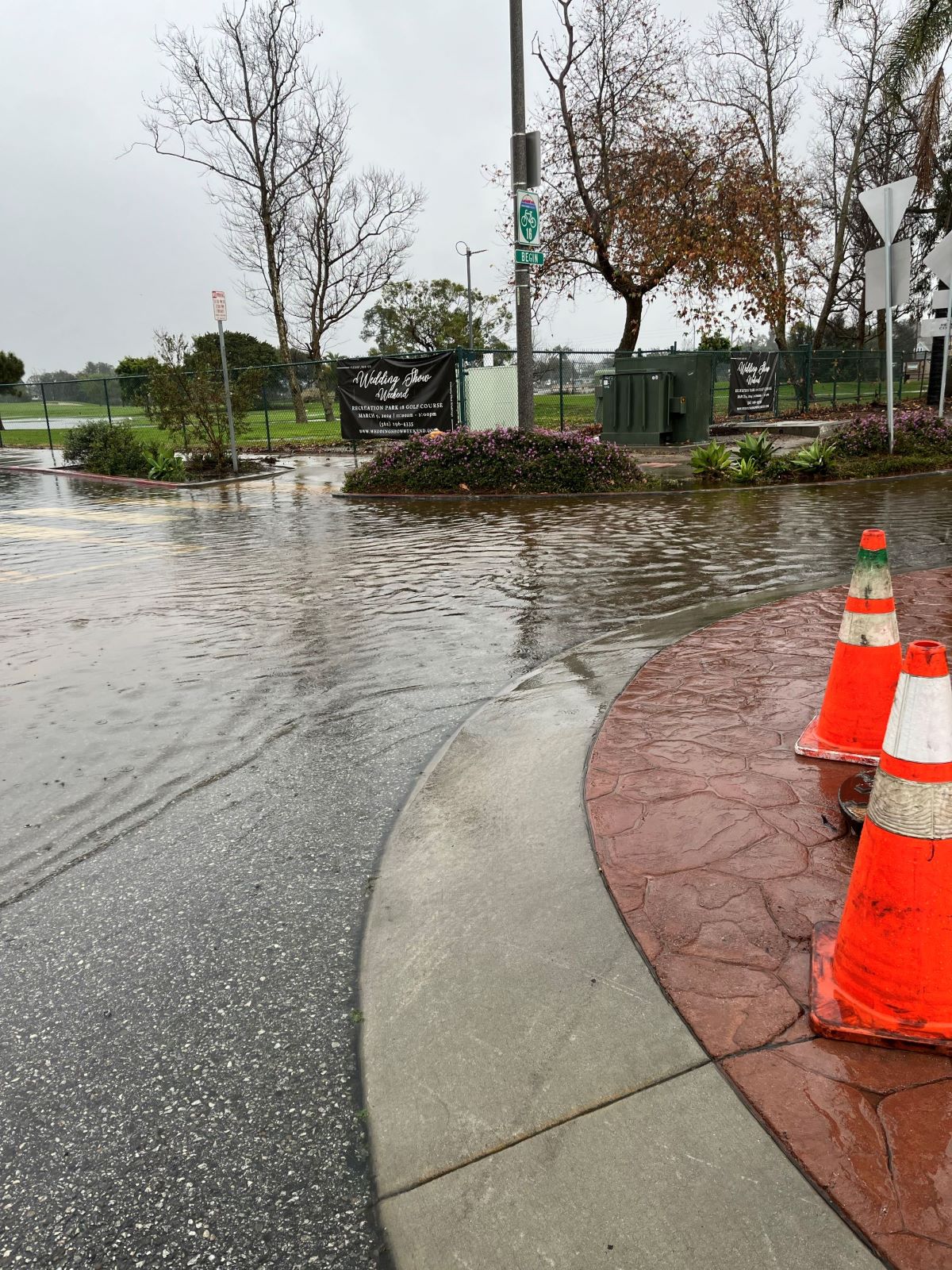
Street flooding in the Long Beach area (LACSD photo)
The Los Angeles County Sanitation Districts manage the sewage for 5.4 million people and serve 78 cities in Los Angeles County. The Districts own and operate a regional sewer system that receives sewage from the cities and unincorporated county areas within our service area. These flows are treated at their treatment plants throughout the County. Rain runoff (stormwater) is managed through a separate storm drain system intended to provide flood control. The Districts’ sewers and treatment plants have capacity to receive additional flow during storms, and the system has performed well during previous heavy rains.
However, during the recent storms that battered Los Angeles County, floodwater entered the Districts’ sewer system and tributary sewer systems through manholes on flooded roadways. This floodwater caused temporary overloads to sewers that resulted in sewage overflowing onto streets at 10 locations. Once the rain slowed, the flood water flows into the sewers decreased and the overflows stopped.
None of these overflows resulted from aging infrastructure or inadequate sewer maintenance. In fact, the Districts’ pumping plants and treatment plants remained on-line during the storms and treated record amounts of flow.
The recent storms are unprecedented. Los Angeles County experienced record setting rain over much of the Los Angeles Basin, sometimes at high intensity. The region’s extensive storm drains and sewers simply could not keep up with the amount of water.
The Districts’ largest treatment plant, the Warren Water Resource Facility, usually treats 250 million gallons of sewage per day. On Tuesday, February 6, that plant treated 560 million gallons, with more than half of the flow coming from stormwater inflow.
Robert Ferrante, Chief Engineer and General Manager of the Sanitation Districts, stated…
“Our goal is to have zero sewer overflows and we are disappointed that the recent overflows occurred. In the aftermath of this huge storm, we will redouble our efforts in working with our member cities and the County to minimize rain getting into the sewer system. We’ve recently invested $11 million in flow sensors throughout the system and will be analyzing that data to determine where the problem areas are so that we can prioritize our efforts.”
The Sanitation Districts are a regional public agency that serves the wastewater and solid waste management needs of 78 cities and unincorporated areas in Los Angeles County. The agency protects public health and the environment and, in so doing, converts waste into resources like recycled water, green energy and recycled materials.